If you're reading this, you probably think exercise is vital. Has there been a recent peak in your interest in starting a gym? Or perhaps you've always wanted to own a gym, and now you're at last prepared to make the move. Either way, you chose the right door! The first thing you should do is draft a Gym Business Plan!
According to Statista, the fitness industry is a global behemoth, generating over $94 billion in revenue in the United States alone in 2021. The phenomenal rise of the sector is being driven by a global trend of consumers placing a high value on health and wellness.
It's important to realize, however, that not all gyms are created equal. A well-thought-out and comprehensive gym business plan can be the difference between a thriving fitness center and one that struggles to make ends meet.
"What does it take to build a thriving gym business in fitness industry?"
The answer is a well-crafted Gym Business Plan.
What is a Gym Business Plan?
An extensive document that describes the goals and strategies for a gym or fitness center is called a business plan. It gives a thorough framework for the founding, running, and expansion of a gym, acting as a road map for entrepreneurs and business owners in the fitness sector. Typically, this document addresses several business-related topics.
Click Here to Download this Business Plan Now
What is the Purpose of a Gym Business Plan?
A strong business plan is essential for attracting investors, obtaining funding, and overseeing the day-to-day operations of the gym. For business owners, it also helps with their goals and market adaptation. Having a solid business plan is crucial for achieving success in the competitive fitness industry, whether you are starting a new gym or trying to expand an existing one.
P.S.- In case you want a gym business plan PowerPoint presentation, check out Gym Business Plan templates and presentation bundles.
Visualization is the Key!
Before you begin the process of drafting a gym business plan, consider your goals. Your vision serves as the cornerstone of your fitness attempt, guiding you toward success. Not only is it a creative exercise, but seeing the gym you want to open someday can be a powerful incentive to get you closer to your dream of owning your fitness facility.
Here are a few steps that should be included in making a powerful Gym Business Plan:
Step 11. Graphical Representation of Financials
Step 1. Executive Summary
An Executive Summary is a crucial aspect of every business plan; it provides a brief overview of the entire plan and serves as a point of contact for investors, partners, and stakeholders.
It typically includes two essential elements: the Quick Pitch and the Entity.
A Quick Pitch is a concise and compelling overview of your business idea or concept. It summarizes the important features of your project in an interesting and concise manner.
It includes Business Concept, Unique Selling Proposition (USP), Market Opportunity, Target Audience, Revenue Model, Milestones and Achievements.
The Quick Pitch is important because it captures the reader's attention right from the start. It is your chance to create interest and enthusiasm for your business idea, encouraging the reader to delve deeper into the business plan.
The Entity section contains essential details about your company's legal structure, location, and important individuals. It comprises the following information: Business Name, Legal Structure, Location, and Founders/Management Team.
This section is important because it offers an initial glimpse into the practical and legal aspects of your business. It helps readers understand the structure, location, and team behind the venture.
Investors and stakeholders often need this information to assess the business's viability and its potential alignment with their own goals and interests. Download this Gym Business Plan and impress your investors.
Click Here to Download this Business Plan Now
Step 2. Company Overview
The second step in a business plan is the Company Overview. This is a section that provides a comprehensive understanding of the business, its goals, and how it plans to fill a market gap. The key components typically included in this section must be:
Vision and Mission are a forward-looking statement that outlines your long-term aspirations and what you aim to achieve as a business. It defines what your company stands for, who it serves, and the fundamental principles guiding its operations.
These statements set the tone for your business and provide a sense of purpose.
Company Goals and Objectives give your business a clear direction and help you measure progress. They also serve as a guide for resource allocation, strategy development, and performance evaluation. Start-up Expenses outlines the initial costs required to launch your business. It includes expenses such as equipment, legal fees, and any other costs associated with getting your business off the ground.
The next information to be included is the Market Gap and Solution. Identify a gap or problem in the market that your business intends to address and describe how your products or services fill the identified market gap. Demonstrating a clear understanding of the market gap and how your business addresses it is vital for showing the relevance and potential success of your venture.
The next point to be highlighted are Products and Services Offered. It provides detailed descriptions of the products and services your business offers. A clear description of your offerings helps readers understand what your business does and how it creates value for customers. It's fundamental to attracting customers and investors.
Finally, add Key Success Factors. These factors will provide the factors which will make your business unique and gain the investor’s confidence. It also signals to investors and stakeholders that you've thought critically about the factors influencing your success.
Click Here to Download this Business Plan Now
Step 3. Industry Analysis
The next step is to include an Industry Analysis. This section would inform the investors that you have critically thought out the plan and why it would benefit them to invest in your business.
If you enter a cake-making competition, you will check your competition's cake and decoration and then try to modify your cake for the better!
Firstly, present Market Analysis. Analyze the size, demographics, and purchasing patterns of the fitness sector. This will help you think outside the box and offer customers something new.
Presenting an analysis of Market Trends can also be important. This includes determining the most recent and up-and-coming trends in the fitness sector, such as technology advancements. By adjusting to market trends, your gym maintains its attraction and relevance.
This will inform the investors that you are keeping up with the latest trends and will be flexible to change in the future to accommodate the trends and keep the business relevant in the long run.
Staying realistic is also essential, which can be reflected in the Market Challenges section. It highlights potential obstacles. Anticipating challenges allows for proactive planning and risk mitigation.
Next to be included are the Growth Drivers. This entails identifying contributing factors to the growth of the business. By identifying the development drivers in your market, you can take advantage of favorable dynamics and match your gym's plans with the essential elements that drive growth and success.
Last but not least, include Geographical Analysis. This includes analyzing the geographic distribution of fitness centers while considering the population density, local demand, and competition.
Customizing your gym's offerings according to local preferences and market penetration will guarantee that they align with your site's distinctive features.
Click Here to Download this Business Plan Now
Step 4. Customer Analysis
The next section is the Customer Analysis.
Customers know best, right? So, it is essential to know what they want. In this section, you can persuade investors that the gym is a vital business venture that satisfies consumer demand by comparing your data with client expectations.
The first subsection can be about the Target Market. It will define gym customers' specific demographic, psychographic, and behavioral characteristics. A clear target market identification aids in customizing and making the most of marketing initiatives and offerings. Imagine a customer telling the investors directly their wants and needs.
This can be done by developing a Buyer Persona.
Make realistic fictional characters that capture the characteristics of your prospective clients, including age, hobbies, obstacles, and driving forces.
Creating buyer personas gives you a better understanding of your clients, allowing you to offer individualized marketing and customer service strategies that fit their objectives and way of life while building stronger relationships and retaining customers.
Lastly, add a Market Sizing subheading. This includes determining your target market's prospective size by calculating the total number of possible clients and their average spending capacity.
Assessing the size of the market aids in estimating the possible revenue and business opportunities. Setting reasonable objectives, creating effective pricing plans, and allocating resources wisely are necessary to secure a market share.
Click Here to Download this Business Plan Now
Step 5. Competitor Analysis
The subsequent section should include Competitor Analysis.
Analyzing competitors entails assessing the advantages and disadvantages of both present and prospective rivals in the fitness sector. Examining their offerings, pricing policies, market share, and client happiness are all part of this.
Knowing who your competitors are will help you find areas where you can stand out from the crowd, offer competitive prices, and create customer-acquisition plans that work. Additionally, it helps set your gym apart from the competition.
This section will be an eye-opener for the investors, and they will see why investing in your business will be a success.
Note: All the information which is included in the Gym Business Plan in thoroughly researched, making it readily available for downloading and use. It will help you achieve your goal of opening a Gym (sounds cheesy but it’s true!).
Click Here to Download this Business Plan Now
Step 6. SWOT Analysis
This section displays a SWOT (strengths, weaknesses, opportunities, and threats) Analysis.
A SWOT analysis assesses your gym's internal strengths and weaknesses and the external opportunities and dangers it faces. It provides an in-depth assessment of your work environment. With all this information, you can make strategic assessments, inform decisions, and help develop a strong company plan.
Investors can use this information to assess your business's overall health and strategic positioning, enabling them to make confident, well-informed investment decisions.
Click Here to Download this Business Plan Now
Step 7. PORTER’S Framework
Next, you can include a PORTER'S Framework section in the business plan PDF.
The relationships between rivals within an industry are examined by Michael Porter's PORTER'S Framework, which includes supplier and buyer negotiating power, the threat of new competitors, the threat of substitute goods and services, and the intensity of competition amongst competitors.
PORTER'S Framework offers a systematic way to understand the industry's competitive environment. This section aids in developing competitive strategies that improve your gym's standing in the industry and provide it with a long-term competitive edge.
For investors, Porter's Framework is a map that leads them through the industry's marketplace. It informs them how your business is a profitable investment in the fitness industry.
Click Here to Download this Business Plan Now
Step 8. Marketing Plan
Now comes one of the most important sections, the Marketing Plan, in the PDF.
Customers won't engage with your product or service, no matter how amazing it is, if they aren't aware of it. Success in the business world depends on visibility!
The first point which can be highlighted is Sales Strategies. As the name suggests, this section describes the marketing strategies and methods. Developing a successful sales strategy is essential to generating revenue. This section outlines the gym's strategy for drawing in leads and turning them into paying clients to get a solid financial result.
Where there are products and services, there are pricing, so add a Pricing Strategies section in your Gym Business Plan. This includes establishing the pricing structure for various gym services and memberships while considering the target market's affordability, competitors' prices, and perceived value.
Lastly, to end this section, display a Sales Funnel. It describes the step-by-step process through which potential customers move from awareness to becoming paying members. This includes lead generation, nurturing, and conversion. Achieving the highest possible client conversion rate requires optimizing the sales funnel.
Click Here to Download this Business Plan Now
Step 9. Operational Plan
Next section that you can add to the Gym Business Plan is Operational Plan.
This is essentially the manual that converts the gym's strategic vision into doable actions.
It assures potential investors that the company has a well-thought-out and workable plan for long-term success rather than just being a notion.
This section can include a Business Model and Milestones.
Business Model clearly describes the framework and procedures for the gym's value creation, delivery, and acquisition. It should be incorporated into this section because it lays out the fundamentals of running the gym. Investors will want to know about the gym's target clientele, revenue projections, and operational sustainability.
Milestones will help you display and determine the goals or benchmarks the gym wants to accomplish in time. This could include launch dates, membership objectives, earnings targets, or other significant successes. Why would the investors be interested in this information?
Milestones are quantifiable measures of the gym's advancement. Investors monitor the company's progress and evaluate its performance in meeting goals, guaranteeing a well-run operating plan.
Click Here to Download this Business Plan Now
Step 10. Financial Plan
Now comes the money talks!
The first thing that you can describe is Financial Assumptions. These clearly explain the significant presumptions that underlie the financial projections. It is an important section because it gives investors transparency by describing the basis for financial estimates. It aids in comprehending the variables and hazards influencing the outlook for the economy.
Next subheading which should be included is Revenue Model and Sales Forecast. It outlines how the gym plans to generate revenue. Investors assess the revenue model to understand the income sources and growth potential. A clear sales forecast helps in evaluating the financial viability of the gym.
Next, you can add a Breakdown Analysis, which includes the costs of running the gym and offers investors insights into cost structures.
In the next sections include Profit and Loss Statement, Cash Flow Statement, Balance Sheet Statement, and Scenario Analysis.
Lastly, you can end this section of the business plan with DCF Valuation. A gym business plan should include DCF valuation since it offers a thorough and quantitative examination of the financial components of the operation. It is a useful tool for investors and business owners alike since it facilitates decision-making, risk assessment, and comprehension of the possible return on investment.
Click Here to Download this Business Plan Now
Step 11. Graphical Representation of Financials
Everything is better with pictures, isn’t it?
After the financial section, it is better to have a Graphical Representation of the Financials, which provides a better understanding of the financial plans. A business plan that includes a graphical representation of its finances is important because it enhances the document's professionalism, especially when seeking partnerships or investments. It also helps to highlight patterns and provides visual clarity.
Click Here to Download this Business Plan Now
Step 12. Management Summary
The penultimate section, which should be included in your Gym Business Plan PDF and Word Document, is Management Summary. (Grab this editable PDF Business Plan and display your team to the investors!)
This section includes organizational structure, professional summary, job roles, and responsibilities.
The gym's Organizational Structure outlines the internal organization of the management staff.
A well-defined organizational structure is essential for efficient overall operation. It makes the line of command and responsibility distribution inside the gym easier for all parties. The Professional Summary provides a brief overview of the qualifications, experience, and areas of expertise of the key members of the management team. Similarly display Jobs and Responsibilities. This element is essential to building the credibility of the management team.
Click Here to Download this Business Plan Now
Step 13. Exit Strategy
Lastly, include an Exit Strategy in your Gym Business Plan.
An Exit Strategy describes the process by which entrepreneurs withdraw their capital. It covers choices including going public, combining, or selling the business. It is essential for a business plan because it instills trust in investors by presenting a clear vision, a well-defined plan, and a plan of action for handling unanticipated circumstances or changes in the industry.
An exit strategy reduces uncertainty by reassuring investors that a plan is in place and defining how and when they may expect a return on their investment.
Click Here to Download this Business Plan Now
In Summary…
Starting a business comes with its own set of challenges. A strong business plan gives you a road map to help you navigate the day-to-day operations of your organization. Whether you're beginning from scratch or hoping to expand, a business plan covers every aspect of your gym to offer you the best chance of success.
While unanticipated problems may happen, a business plan makes it simple to identify potential issues. Your business plan is not a fixed, permanent document; instead, it can help you grow and flourish by adjusting to the times!
Click here to grab a FREE PDF!
We'd love to hear your thoughts! Comment below if you found this blog helpful or have any insights to share!
Access ten original start-ups and sector-specific investor presentations and documents by purchasing our membership. The price of a membership is only $49.99!
Frequently Asked Questions
FAQ: How do I estimate the initial investment required for starting a gym?
Answer: Conduct thorough research on equipment costs, lease or construction expenses, licensing fees, and initial marketing. Create a detailed budget to determine the overall startup investment.
FAQ: What marketing strategies are effective for attracting gym members?
Answer: Utilize a combination of online and offline marketing channels, such as social media campaigns, referral programs, partnerships with local businesses, and special promotions to engage potential members.
FAQ: How can I differentiate my gym from competitors in the area?
Answer: Focus on creating a unique value proposition, such as specialized fitness classes, personalized training programs, or state-of-the-art equipment. Building a strong community within your gym can also set you apart.
FAQ: What considerations should I include in the gym's financial projections?
Answer: Include realistic estimates of membership growth, average monthly fees, operating expenses, and potential ancillary revenue streams. Regularly review and adjust projections based on actual performance.
FAQ: How can I ensure legal compliance and safety in my gym?
Answer: Consult with legal professionals to understand local regulations, obtain necessary permits, and establish safety protocols. Implement regular equipment maintenance, provide staff training on safety procedures, and clearly communicate rules to members.


![How to Craft a Perfect Gym Business Plan [Free PDF]](https://www.slideteam.net/wp/wp-content/uploads/2024/01/BANNER-4-1013x441.jpg)


 Customer Reviews
Customer Reviews


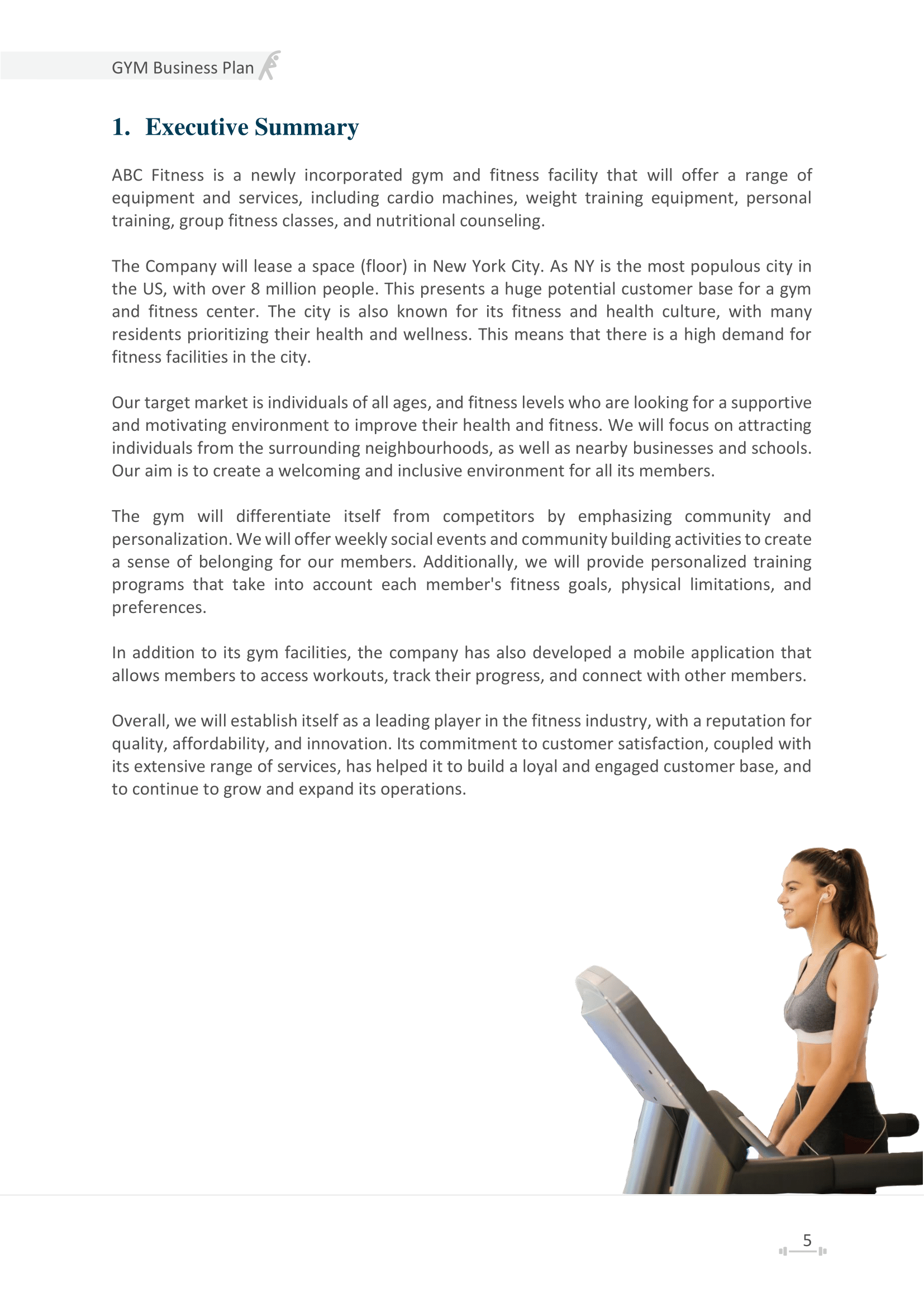
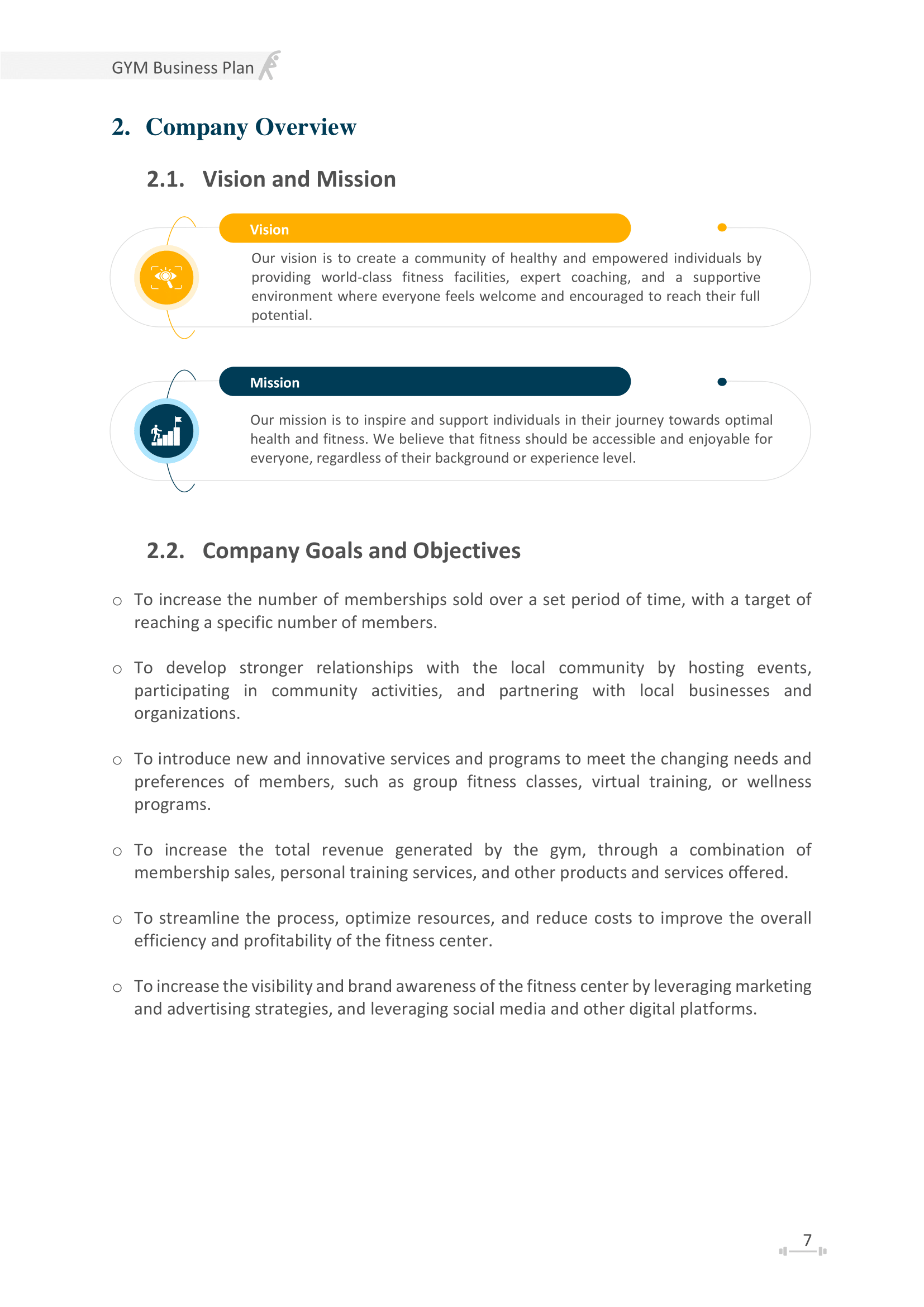


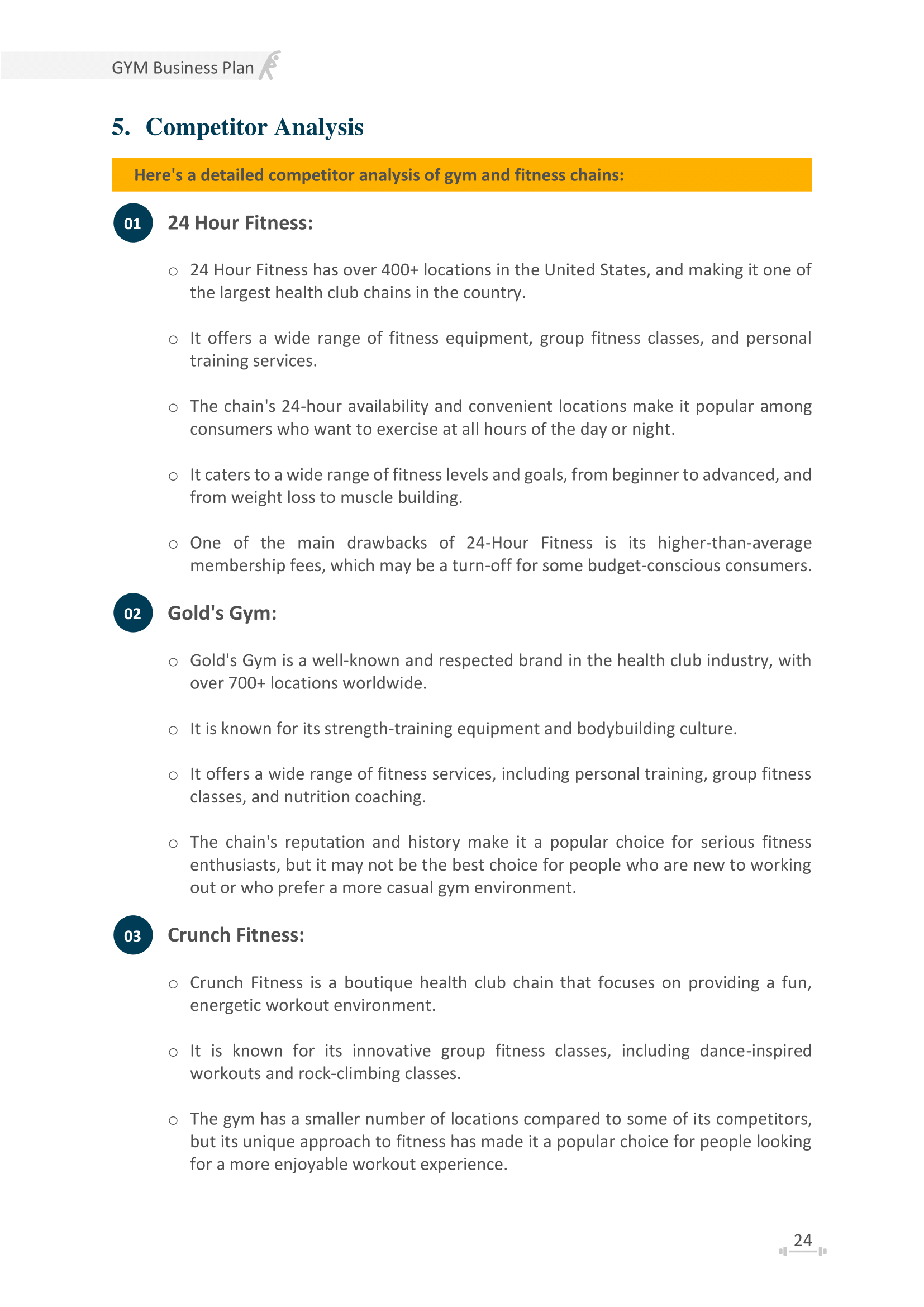
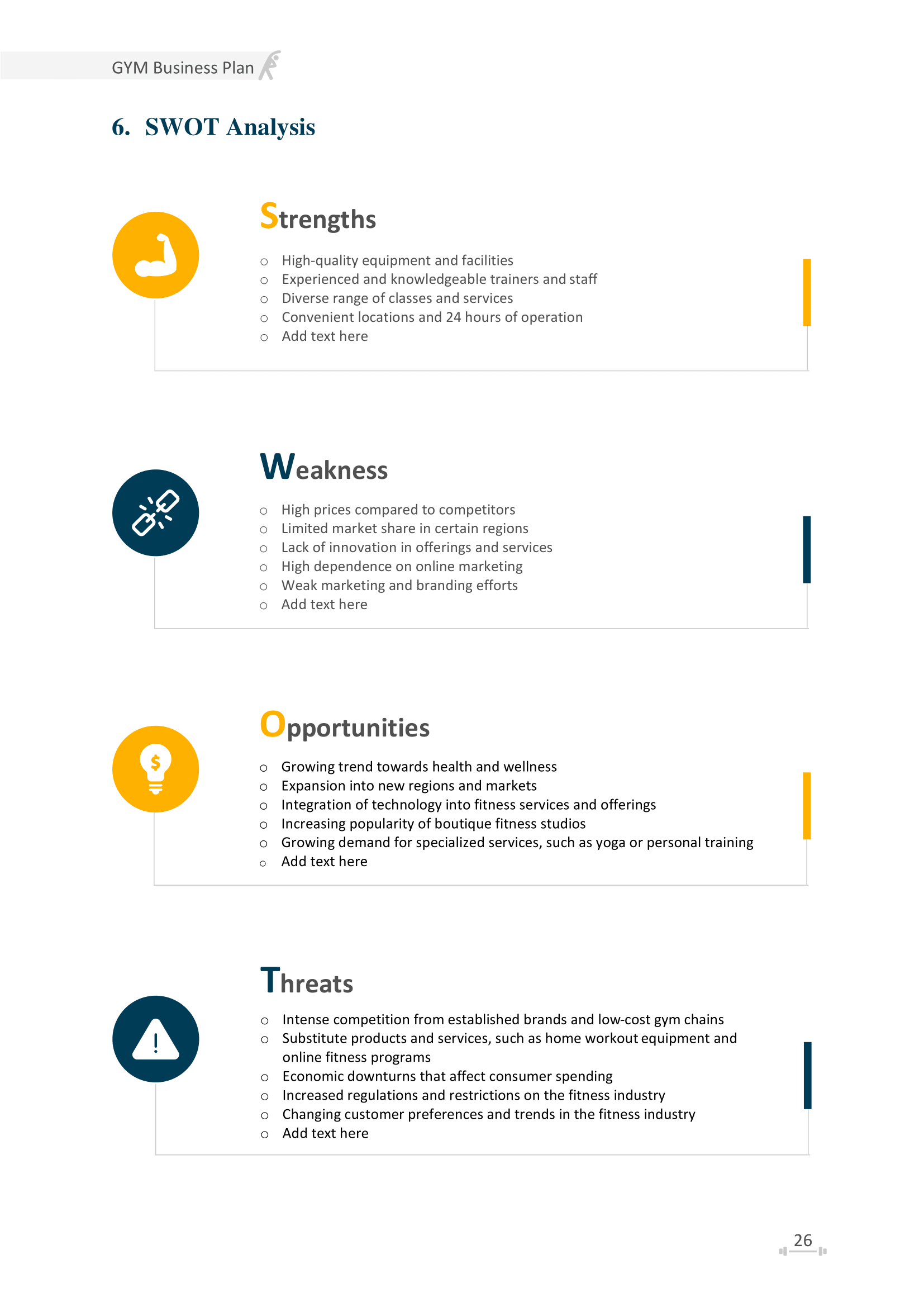
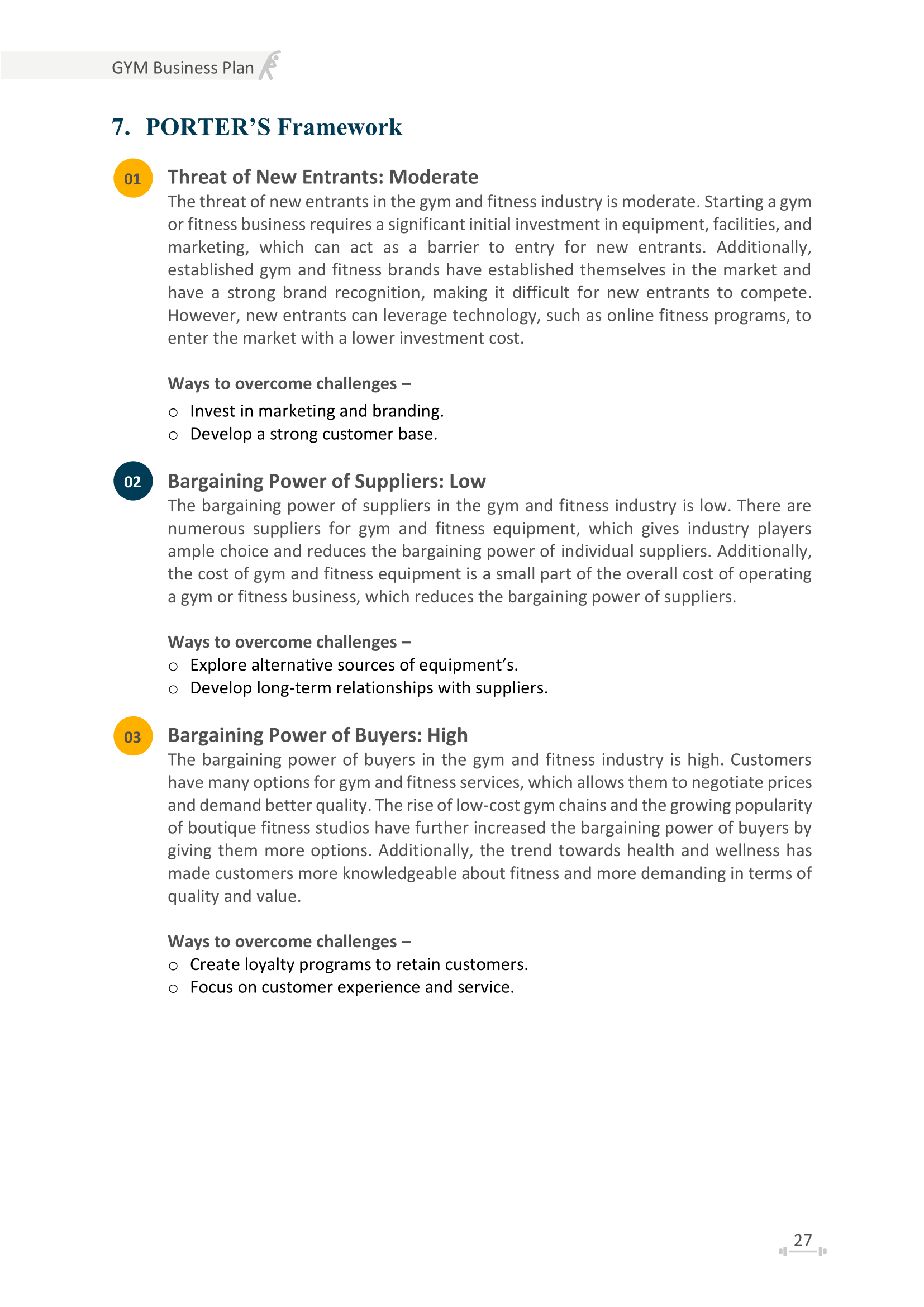
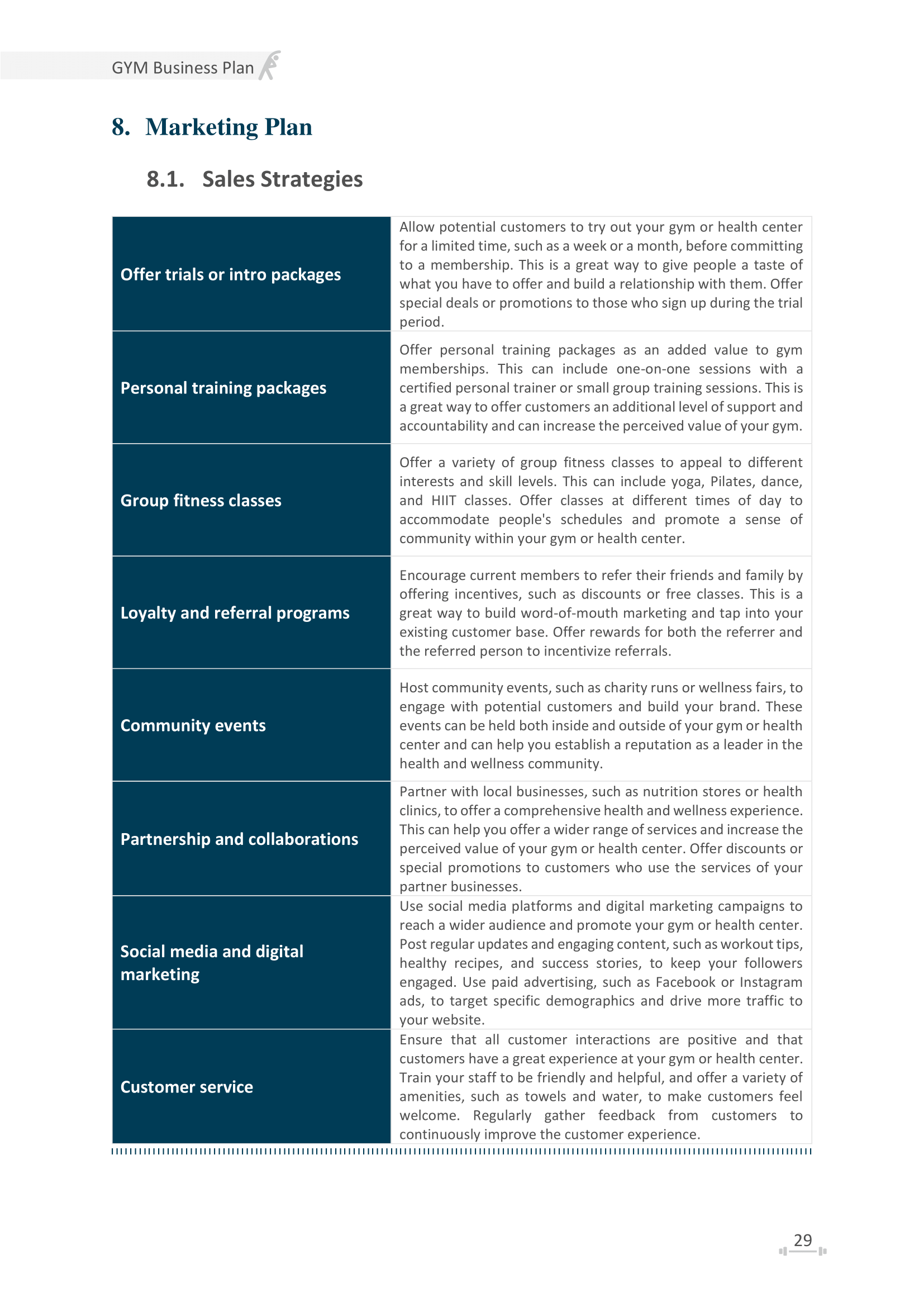

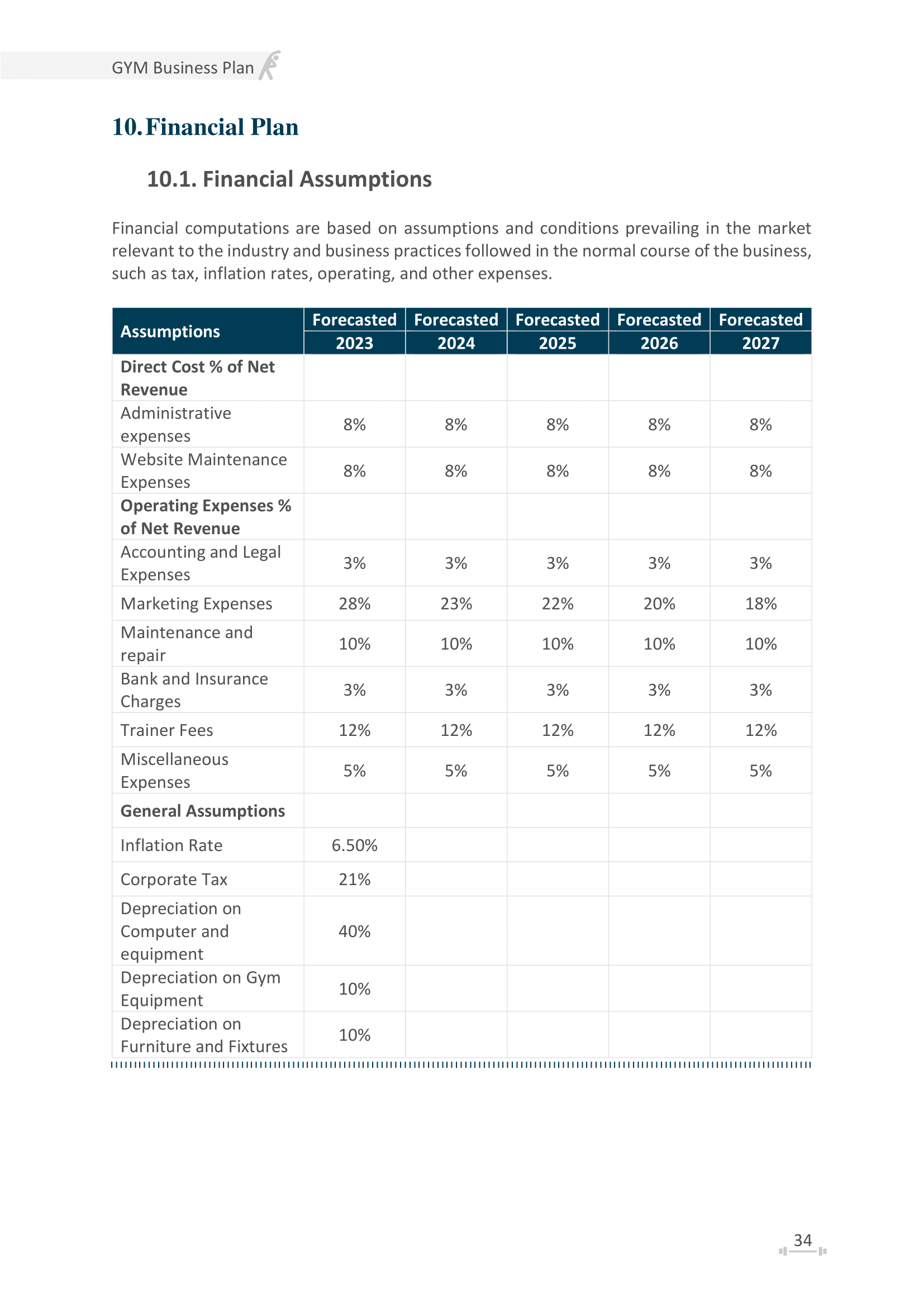
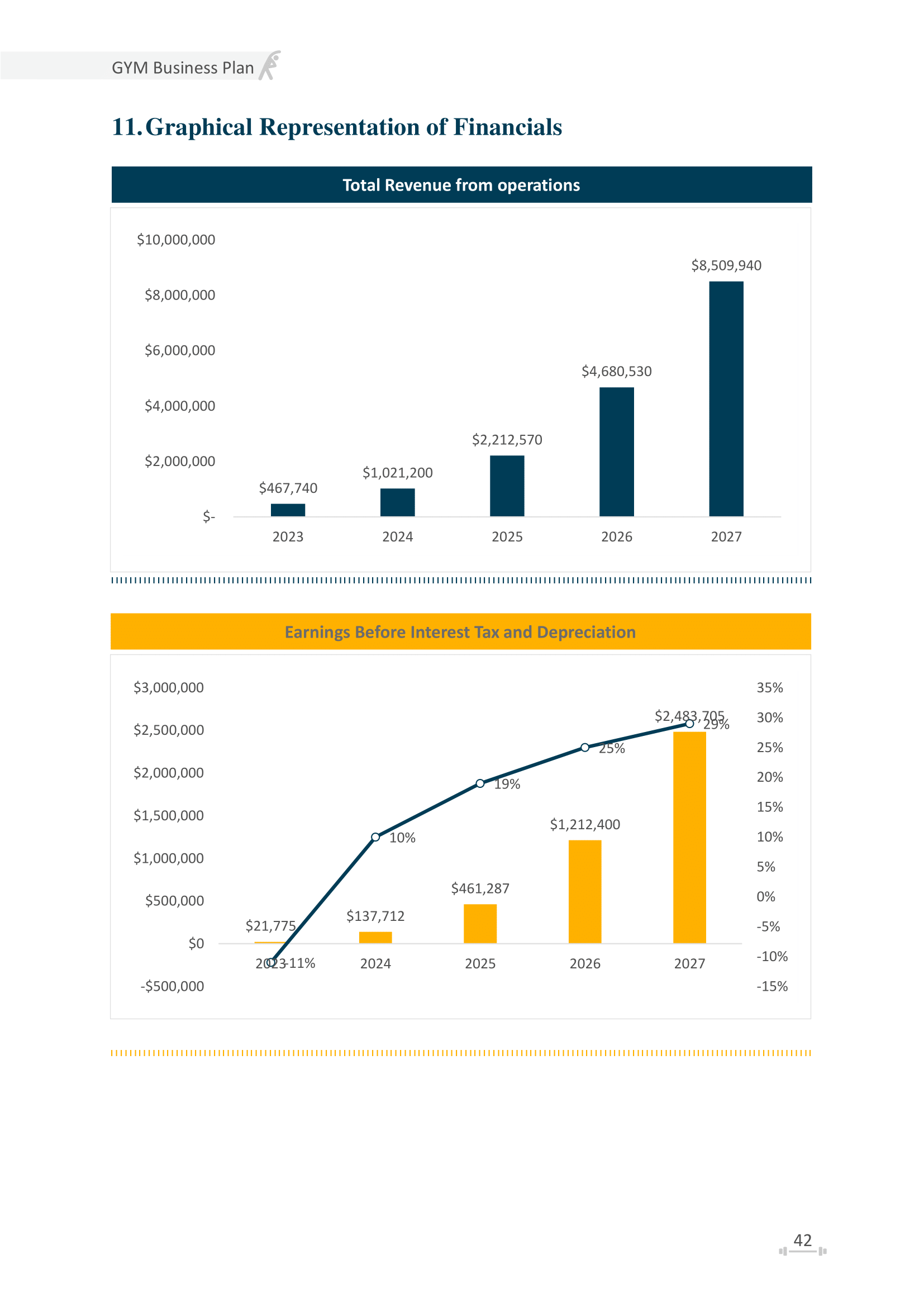
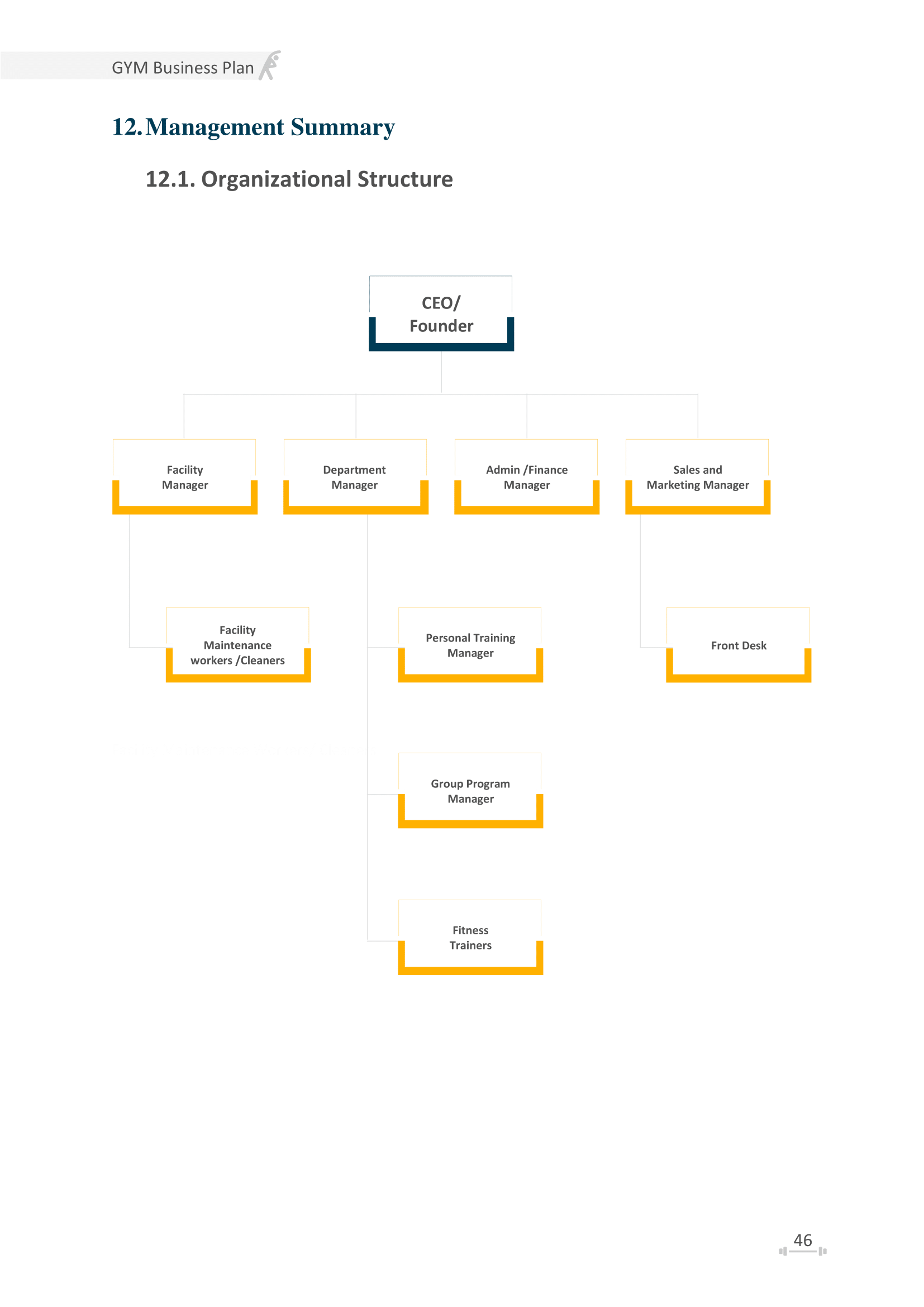
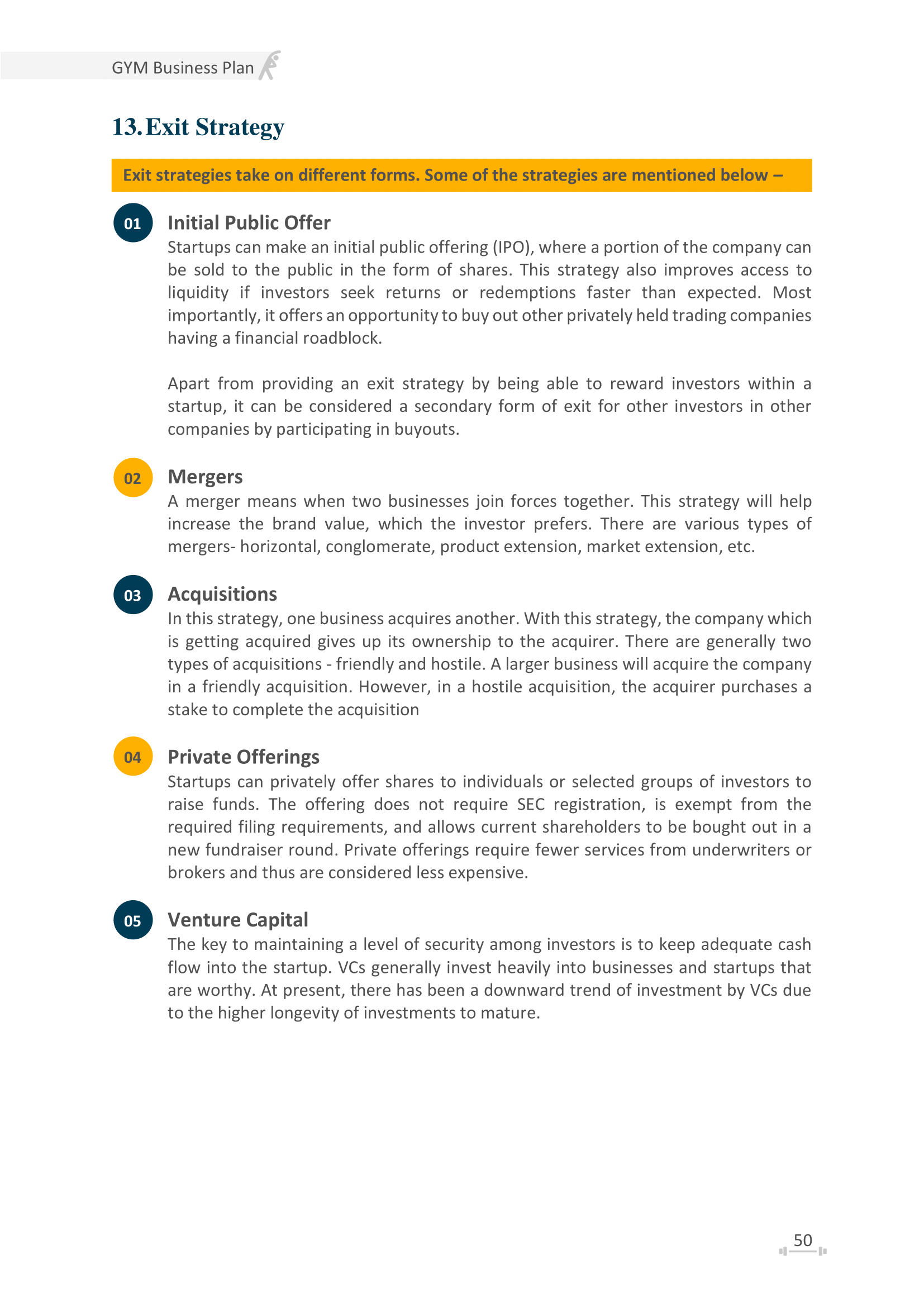



![How to Craft a Daycare Business Plan! [For Entrepreneurs] -Free PDF](https://www.slideteam.net/wp/wp-content/uploads/2023/12/BANNER-10-1013x441.jpg)
![How to Write a Boutique Business Plan [Free PDF]](https://www.slideteam.net/wp/wp-content/uploads/2024/01/BANNER-1-1013x441.jpg)
![Top 7 Slides on Green Marketing Guide for Sustainable Business! [With Free PPT and PDF]](https://www.slideteam.net/wp/wp-content/uploads/2023/09/BANNER-1-1013x441.jpg)
![Top 10 slides on Google Bard! Future of Generative AI [Free PPT and PDF]](https://www.slideteam.net/wp/wp-content/uploads/2023/09/BANNER-3-1013x441.png)











